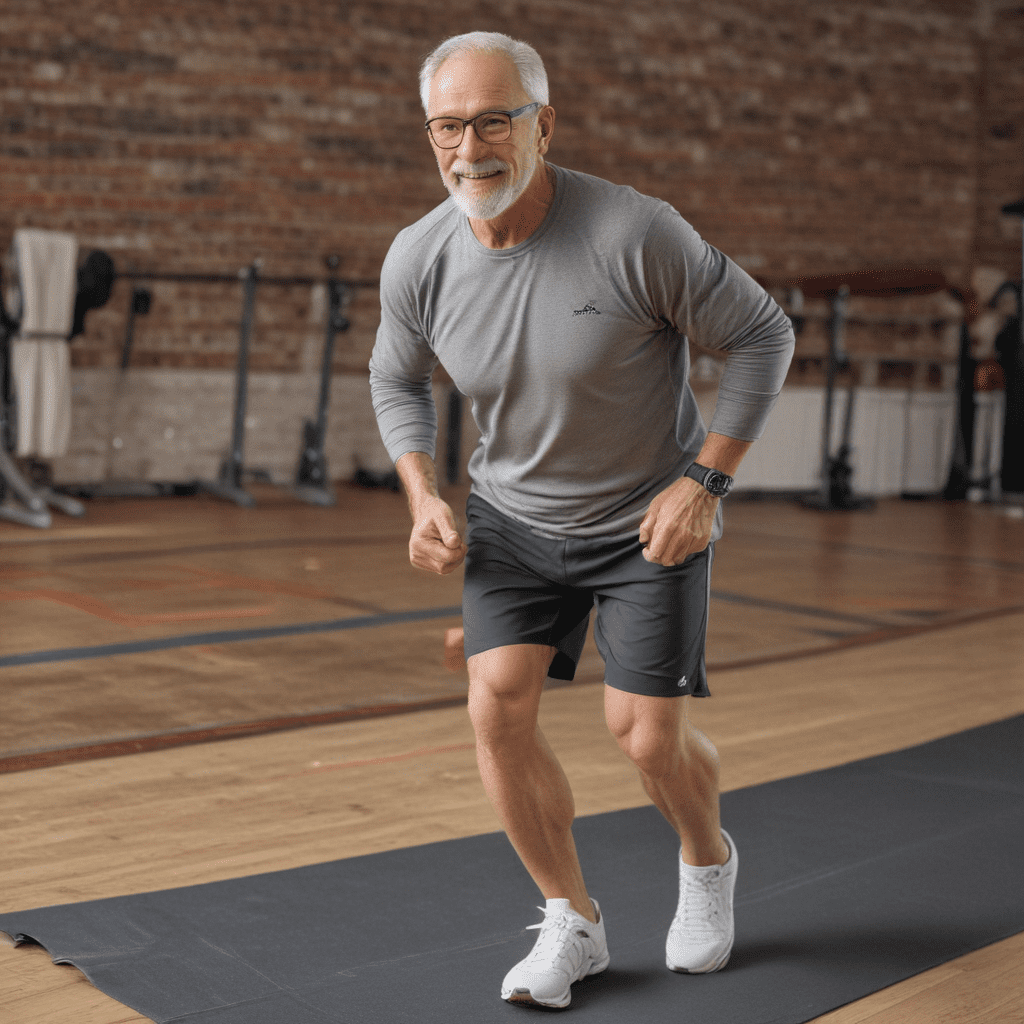
Benefits of Exercise Agility for Seniors: Stay Nimble and Quick
Staying active and fit as we age is crucial for maintaining our independence, quality of life, and overall well-being. Exercise agility plays a vital role in enhancing the physical and cognitive abilities of seniors, allowing them to live more fulfilling and vibrant lives. Here are the top five benefits of exercise agility for seniors:
Enhanced Coordination and Balance
Exercise agility improves coordination and balance, which are essential for performing everyday activities safely and confidently. As we age, our balance and coordination naturally decline, increasing the risk of falls and injuries. Agility exercises challenge the body's ability to maintain equilibrium, strengthen the core muscles, and improve proprioception, the sense of where our body is in space.
Reduced Risk of Falls and Injuries
Improved coordination and balance lead to a reduced risk of falls and injuries. Falls are a major concern for seniors, as they can result in serious injuries, hospitalization, and even death. Agility exercises strengthen the muscles around the joints, making them more stable and less prone to injury. By practicing agility drills, seniors can improve their stability and reduce their chances of falling.
Improved Mobility and Independence
Exercise agility enhances mobility and independence, allowing seniors to remain active and engaged in their daily lives. Agility exercises improve the range of motion in joints, increase flexibility, and strengthen muscles. This improved mobility enables seniors to perform activities such as walking, climbing stairs, and getting in and out of chairs with greater ease. As a result, they can maintain their independence and continue to live in their own homes.
Boosted Cognitive Function
Research indicates that exercise agility may also boost cognitive function in seniors. Agility exercises challenge the brain to process information quickly and make decisions on the fly. This helps improve attention, memory, and overall cognitive performance. Studies have shown that seniors who engage in agility exercises have better working memory, problem-solving abilities, and reduced risk of cognitive decline.
Sharpened Reflexes and Reaction Times
Exercise agility sharpens reflexes and reaction times, which are essential for avoiding accidents and staying safe. As we age, our reflexes and reaction times naturally slow down, making us more vulnerable to tripping, slipping, and other hazards. Agility exercises train the body to respond quickly to unexpected changes in balance or environment, improving reflexes and reaction times.
Increased Confidence and Self-Esteem
Exercise agility can boost confidence and self-esteem in seniors. As they improve their coordination, balance, and mobility, they feel more capable and confident in their abilities. This newfound confidence translates into a more positive self-image and an increased willingness to engage in social activities and new challenges. Seniors who participate in agility exercises often report feeling more vibrant, energetic, and youthful.
Improved Physical Functioning and Activities of Daily Living
Exercise agility enhances physical functioning and improves the ability to perform activities of daily living (ADLs). The exercises strengthen muscles, increase flexibility, and improve coordination, making it easier for seniors to perform daily tasks such as bathing, dressing, cooking, and cleaning. Improved physical functioning also allows seniors to participate in hobbies and activities that they may have had to give up due to declining mobility.
Enhanced Bone Density and Reduced Osteoporosis Risk
Exercise agility can help maintain bone density and reduce the risk of osteoporosis, a condition that weakens bones and makes them more susceptible to fractures. Agility exercises involve weight-bearing activities, which put stress on the bones and stimulate them to become stronger. By maintaining bone density, seniors can reduce their risk of fractures and maintain their mobility and independence.
Promoted Physical Activity and Maintenance of Healthy Weight
Exercise agility promotes physical activity and helps seniors maintain a healthy weight. Agility exercises are fun and engaging, making them more likely to be incorporated into a regular fitness routine. The combination of increased physical activity and improved mobility can help seniors burn calories and maintain a healthy weight, reducing the risk of chronic diseases such as heart disease, stroke, and type 2 diabetes.
Overall Better Quality of Life
Improved physical and cognitive function, reduced risk of falls and injuries, and increased confidence and self-esteem all contribute to an overall better quality of life for seniors. Agility exercises empower seniors to live more active, independent, and fulfilling lives. They can enjoy activities they love, spend time with family and friends, and contribute to their communities with greater ease and vitality.
FAQs on Exercise Agility for Seniors
1. How often should seniors perform agility exercises?
Aim for two to three agility sessions per week.
2. What types of exercises are included in agility training?
Agility exercises include dynamic movements such as side shuffles, cone drills, and balance exercises.
3. Can seniors with limited mobility participate in agility exercises?
Yes, modified agility exercises can be tailored to individual needs and abilities.
4. Is it safe for seniors with health conditions to participate in agility exercises?
Consult a healthcare professional before starting an agility program if you have any underlying health conditions.
5. How long does it take to see results from agility exercises?
With regular practice, noticeable improvements in coordination, balance, and agility can be seen within a few weeks.


